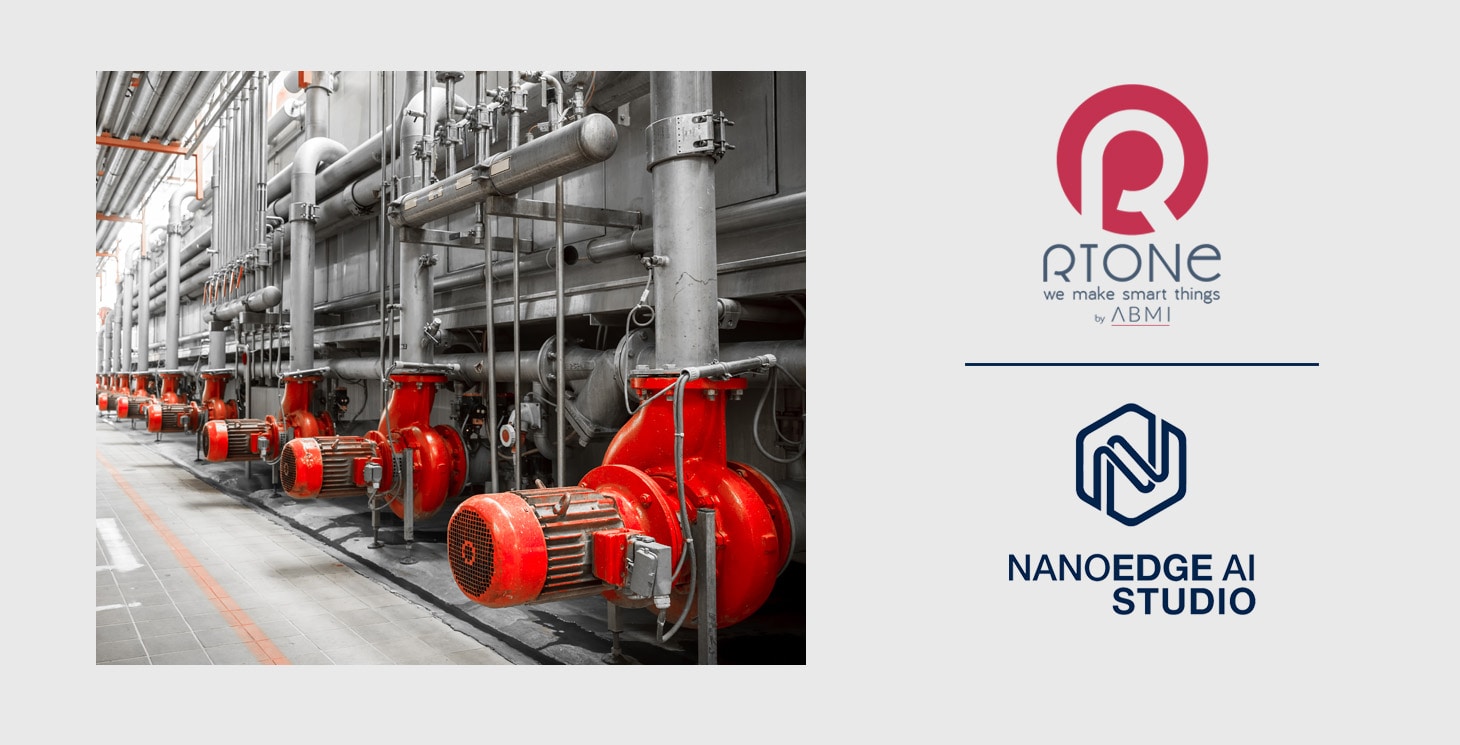Anomaly detection with on-device learning with Rtone
Anomaly detection solution on industrial equipment, running on STM32 MCU.

Rtone, an ST authorized partner, is a product development studio that supports its customers in the study, design, industrialization, production, and maintenance of intelligent, connected solutions.
As integrators specialized in the field of IoT, Rtone has developed its skills in embedded machine learning and turned to our NanoEdge AI Studio tool to quickly develop a demonstration of anomaly detection on an engine and a pump.
The tool allowed a rapid and guided implementation of a ready-to-use ML model for deployment without advanced knowledge in data science.
Approach
This demo, running on a STEVAL-STWINKT1B, is based on a machine learning model that detects vibrational anomalies from a 3D accelerometer. Vibrations are generated by two types of actuators:
- An engine equipped with a magnetized device allowing the creation of a variable unbalance.
- A pump equipped with an air hose whose flow is controlled by a tap.
First, the engine is started and a first training phase is launched under normal operating conditions. The learning is done in real-time on the STM32L4R9 MCU and includes 50 signals. When a fault is simulated on the running engine, the anomaly is immediately detected.
This configuration is also applied to the pump. After training under normal operating conditions, the generated vibrational disturbances also trigger anomaly detection.
It is also possible to train the model to detect an anomaly in the engine or the pump when both are in operation.
Sensor
3D accelerometer (ref: ISM330DHCX)
Data
- Sampling frequency: 3.3 KHz
- Resolution: 2G
- Number of axes: 3
- Number of values per signal: 3*1024
- Number of signals per sub dataset: 2*300
- Number of sub datasets: 10
- Total number of signals: 6000
Results
- Inference time: 7 ms
- Flash: 3.7 Kbytes
- RAM: 12.2 Kbytes
Resources
Optimized with NanoEdge AI Studio
A free AutoML software for adding AI to embedded projects, guiding users step by step to easily find the optimal AI model for their requirements.
Compatible with STM32L4
The STM32 family of 32-bit microcontrollers based on the Arm Cortex®-M processor is designed to offer new degrees of freedom to MCU users. It offers products combining very high performance, real-time capabilities, digital signal processing, low-power / low-voltage operation, and connectivity, while maintaining full integration and ease of development.